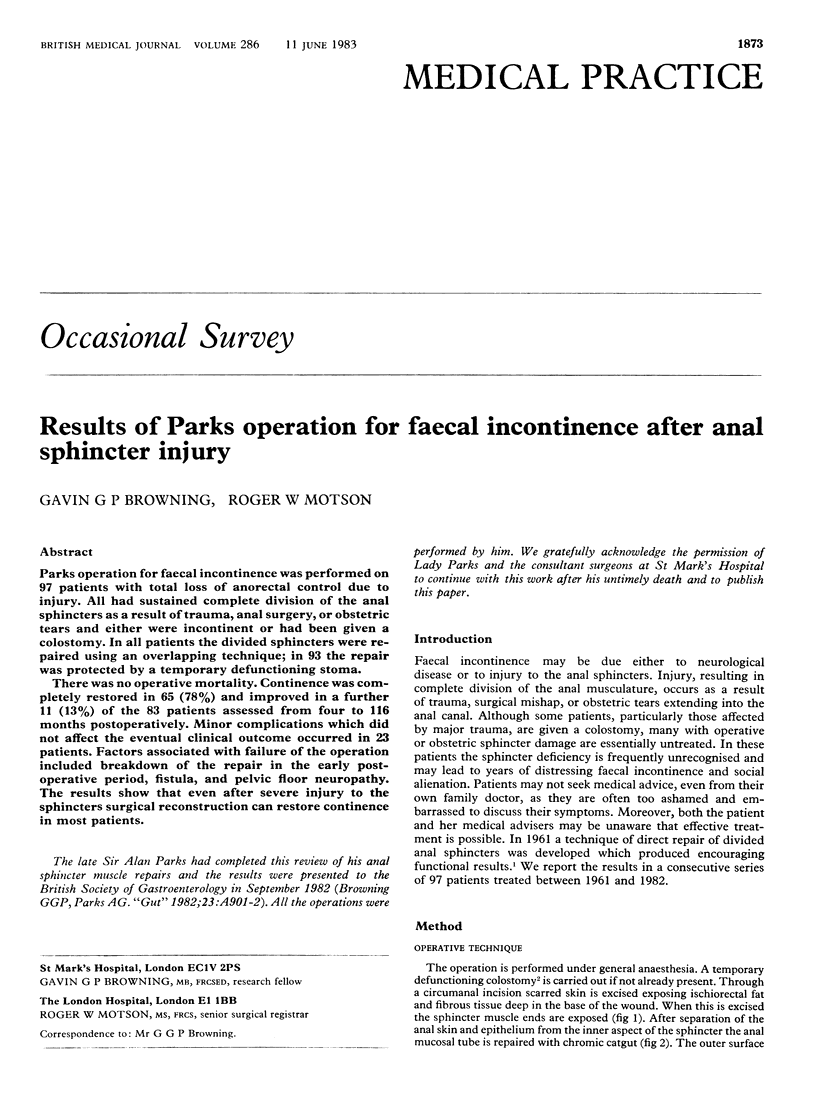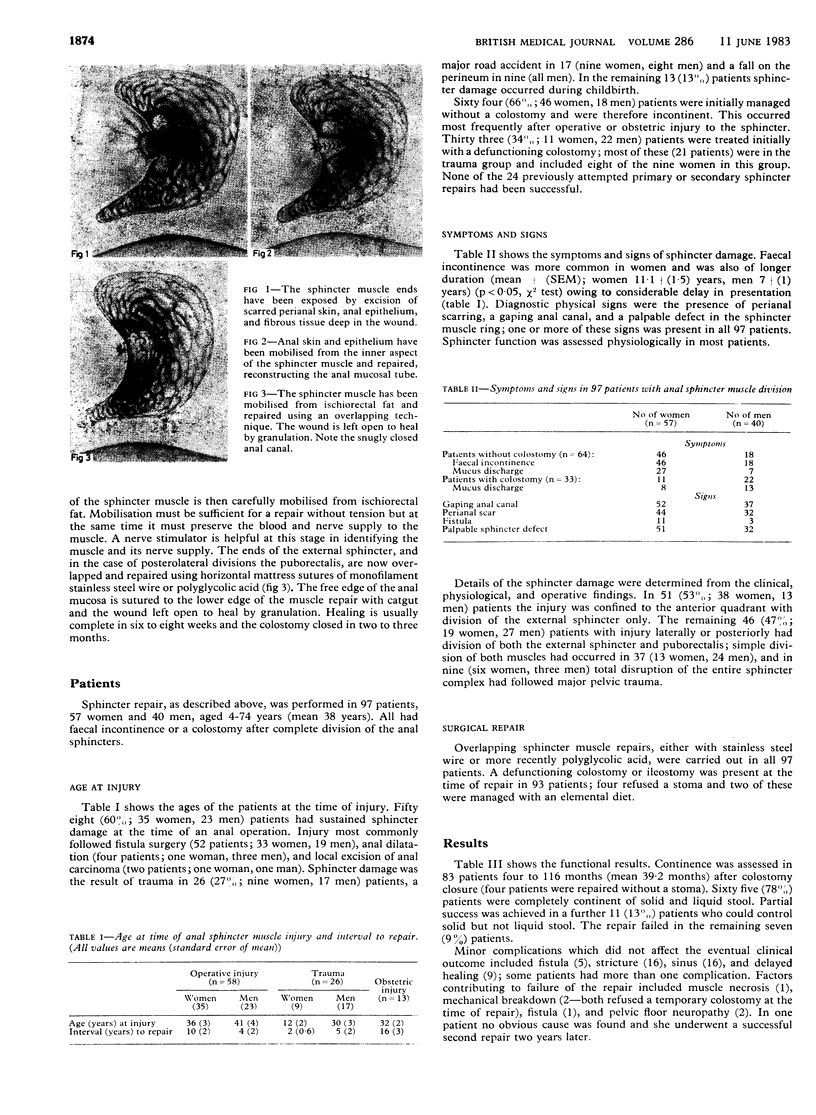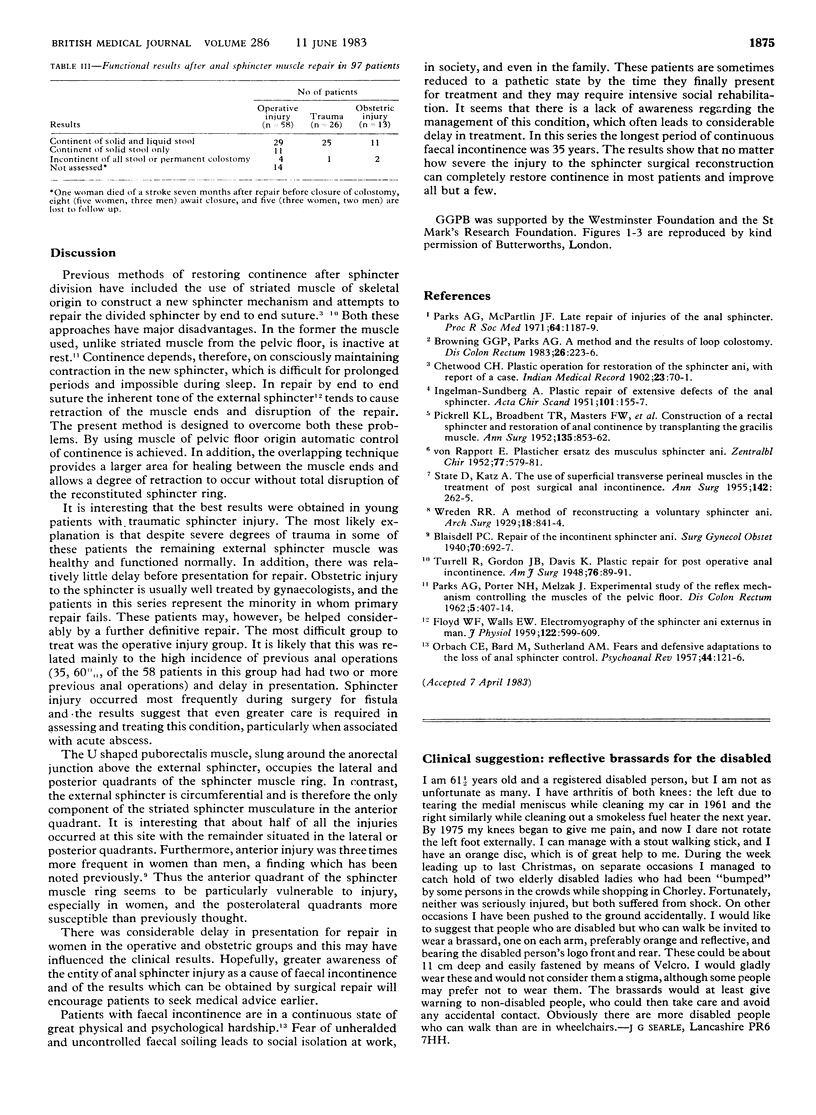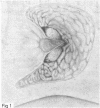Abstract
Parks operation for faecal incontinence was performed on 97 patients with total loss of anorectal control due to injury. All had sustained complete division of the anal sphincters as a result of trauma, anal surgery, or obstetric tears and either were incontinent or had been given a colostomy. In all patients the divided sphincters were repaired using an overlapping technique; in 93 the repair was protected by a temporary defunctioning stoma. There was no operative mortality. Continence was completely restored in 65 (78%) and improved in a further 11 (13%) of the 83 patients assessed from four to 116 months postoperatively. Minor complications which did not affect the eventual clinical outcome occurred in 23 patients. Factors associated with failure of the operation included breakdown of the repair in the early postoperative period, fistula, and pelvic floor neuropathy. The results show that even after severe injury to the sphincters surgical reconstruction can restore continence in most patients.
Full text
PDF


Images in this article
Selected References
These references are in PubMed. This may not be the complete list of references from this article.
- Browning G. G., Parks A. G. A method and the results of loop colostomy. Dis Colon Rectum. 1983 Apr;26(4):223–226. doi: 10.1007/BF02562482. [DOI] [PubMed] [Google Scholar]
- FLOYD W. F., WALLS E. W. Electromyography of the sphincter ani externus in man. J Physiol. 1953 Dec 29;122(3):599–609. doi: 10.1113/jphysiol.1953.sp005024. [DOI] [PMC free article] [PubMed] [Google Scholar]
- INGELMAN-SUNDBERG A. Plastic repair of extensive defects of the anal sphincter. Acta Chir Scand. 1951;101(2):155–157. [PubMed] [Google Scholar]
- ORBACH C. E., BARD M., SUTHERLAND A. M. Fears and defensive adaptations to the loss of anal sphincter control. Psychoanal Rev. 1957 Apr;44(2):121–175. [PubMed] [Google Scholar]
- PARKS A. G., PORTER N. H., MELZAK J. Experimental study of the reflex mechanism controlling the muscle of the pelvic floor. Dis Colon Rectum. 1962 Nov-Dec;5:407–414. doi: 10.1007/BF02616644. [DOI] [PubMed] [Google Scholar]
- PICKRELL K. L., BROADBENT T. R., MASTERS F. W., METZGER J. T. Construction of a rectal sphincter and restoration of anal continence by transplanting the gracilis muscle; a report of four cases in children. Ann Surg. 1952 Jun;135(6):853–862. doi: 10.1097/00000658-195206000-00010. [DOI] [PMC free article] [PubMed] [Google Scholar]
- Parks A. G., McPartlin J. F. Late repair of injuries of the anal sphincter. Proc R Soc Med. 1971 Dec;64(12):1187–1189. [PMC free article] [PubMed] [Google Scholar]
- RAPPERT E. Plastischer Ersatz des Musculus sphincter ani. Zentralbl Chir. 1952;77(14):579–581. [PubMed] [Google Scholar]
- STATE D., KATZ A. The use of superficial transverse perineal muscles in the treatment of post surgical anal incontinence. Ann Surg. 1955 Aug;142(2):262–265. doi: 10.1097/00000658-195508000-00013. [DOI] [PMC free article] [PubMed] [Google Scholar]





